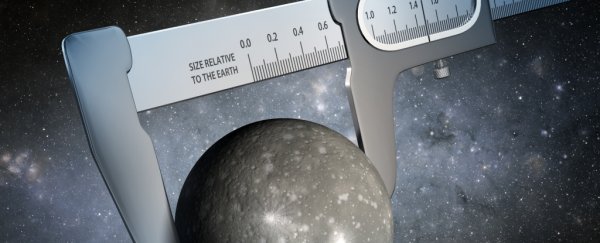There's something sorely lacking in the scientific fields of astronomy and astrophysics. As it turns out, we're still lacking logical consistency in how we measure what goes on in space.
Writing for the journal Astronomy & Geophysics, retired physics professor Keith Atkin of the University of Sheffield says that our current global "system" - if one can even call it that - is an absolute omnishambles (paraphrasing).
"Many of the units used by practising astronomers constitute an unfortunate confusion of imperial, old CGS (centimetre-gram-second), SI, together with a number of entirely redundant units peculiar to astronomy," he writes.
If you follow space news at all, you'll probably be familiar with the measurement mayhem.
Most of the world tends to use SI (the International System of Units) or metric units for day-to-day life - based on litres, grams, metres, and Celsius or Kelvin.
However, the US is still using Imperial measurements, such as ounces, fluid ounces, feet and miles, and Fahrenheit.
"The US," Atkin notes, "represents about 4 percent of the population of the Earth."
The UK is also problematic - the country is undergoing a long, slow conversion to metric, which means that while schools teach the metric system, the imperial system is still well in practical use.
"Students who have learned their physics using SI units and start to take an interest in astronomy will, on joining an astronomical society, commonly find people talking about "six-inch" telescopes or hear enthusiastic descriptions of spacecraft travelling at "thousands of miles per hour'," says Atkin.
"Professional astronomers are not immune to this muddle as the astronomical unit (au), the light-year (ly), and the parsec (pc) are widely regarded as respectable and useful.
"In actuality, these units are redundant and serve no useful purpose. My bête noire is the megaparsec - a clumsy and ugly fusion of an SI prefix and a non-SI unit."
This means there's mental effort involved in trying to think and conduct experiments in another system, or learning to convert on the fly - effort that could be better spend on other pursuits.
But it can cause other problems, too - for every new calculation introduced to a work, there's another opportunity for an error to be made, no matter how simple the calculation might be.
And if equipment is involved, that can be costly.
This was spectacularly demonstrated in 1999, when NASA lost a $125 million Mars orbiter partially due to a conversion mishap, using Imperial measurements when the Lockheed engineering team who built the spacecraft had used SI.
Atkin proposes that we make a move to basing all astronomical distance measurements on the metre, using the SI prefix system, and speed measurements as kilometres per second.
Mass could also be expressed in kilograms instead of using the mass of the Sun, also known as Solar masses or M⊙, as a baseline.
This would be easy to standardise. The megametre (106 metres) could be used for planetary scales, the gigametre (109 metres) and the terametre (1012 metres) within the Solar System, the petametre (1015 metres) and exametre (1018 metres) for inside the Milky Way, and the zettametre (1021 metres) and yottametre (1024 metres) for the farthest distances.
Likewise, the Sun's weight could be expressed, albeit using a currently unofficial prefix, as 1.98 besagrams - that's 1033 grams.
As with all changes of this nature, it may be difficult to implement - and certainly very time consuming.
"As a colleague recently observed: 'Andromeda will be a good deal closer to the Solar System than it is now, before we read of its distance in zettametres'," Atkin writes.
"However, even if only some of these changes can be made, this will surely benefit understanding and communication within astronomical circles and between astronomy and related sciences."
The paper has been published in Astronomy & Geophysics.
